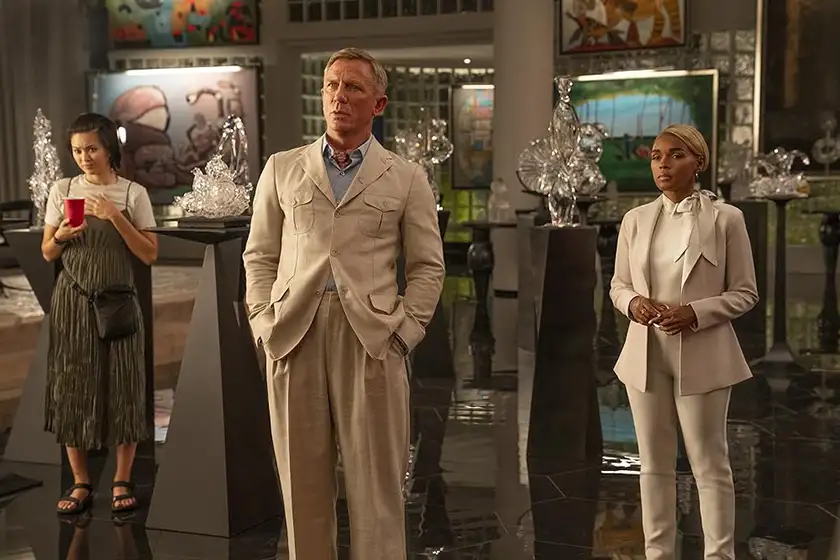Movie theaters are struggling right now, but can the people behind the movies themselves do something about it? We go over how film studios can save movie theaters.
Movie theaters have been struggling immensely ever since the COVID-19 pandemic. But 2024 has been particularly bleak for the industry, with Inside Out 2 being the first movie of the year to open at over $100 million domestically … nearly halfway through the year. Which surely won’t send Pixar the message that they should do more sequels, right? Corporations are smart like that. But even with its success, the industry remains in rough shape that, while not as dire as the COVID times, has been getting worse for years.
But all is not lost … probably … maybe … Okay, my confidence is low. But to quote Dune Part Two, there is a narrow way through. And part of that way through relies on the studios who make the films that go out to theaters … and some of the films that don’t, but we’ll get to that. There are four major things filmmakers and producers can do to improve the state of theatrical distribution while reaping their own benefits in the process. So, hit pause on your Disney Netflix Plus Max Prime video, sit back, and enjoy my list of how film studios can save movie theaters.
Lengthen the theatrical window

One of the most common reasons I’ve heard people give for skipping a movie in theaters is, “I’ll wait for it to come out at home.” Ten years ago, that would have been a heavier ask, because the time between a film’s theatrical release and its home release was much longer. You think any sane person could wait three whole months to see The Emoji Movie? Ever since COVID, however, that waiting time has averaged out to one month or even a couple of weeks. That doesn’t exactly incentivize people who are already hesitant to go to the theater, especially if they’re not excited for the movie or it’s not touted as some mind-blowing big-screen spectacle.
By all accounts, studios take in the highest percentage of film grosses early in theatrical runs, and long-term on-demand/streaming releases are more profitable for them than long-term theatrical releases … which means theaters don’t make a lot of money in the first week, which is when most people would go to see a new movie anyway. It’s almost like such a release model was always really stupid and should’ve been reworked decades ago. But since I doubt that’ll ever happen, I still stand by the best way to improve box office grosses – and therefore theatrical income – is by keeping movies in theaters longer.
It’s a risky proposition, I admit. But like I said, audiences would be more motivated to return to theaters if they were otherwise forced to wait longer for the film to be available at home, which would bring more money to theaters even in later weeks (it’s not like nobody sees films in Weeks 2, 3, or even 4, after all). I don’t think most people are so opposed to theaters that they’ll wait months to see something that looks interesting to them, especially if the film has good marketing behind it. And studios would see benefits by building up more widespread promotion for their work and giving different audiences their preferred way of seeing a movie. The process is flawed, but it worked fine for decades. There must be a reasonable way to go back to it.
Do more hybrid releases

As much as Netflix is a punching bag for its plethora of subpar movies made to fill up its service, they’ve made some great films that would work really well in movie theaters. Some of them, like Army of the Dead, Glass Onion, and Hit Man, did get the chance to shine in theaters for about a week or two before they were made available on the website. But there are still plenty of films made by Netflix and other streaming services that never got this hybrid release, despite being practically made for it. Say what you want about The Gray Man, but it would’ve looked so good on the big screen. Pixar notoriously stranded Luca and Turning Red on Disney+, both of which could have drawn in families looking to get out of the house.
I don’t know which of these films’ directors wanted a theatrical release and which ones didn’t, but my point is that movie theaters and streaming services don’t need to be each other’s enemies. On the contrary, if the two industries worked cooperatively more often, they could build each other up. A service like Netflix or Disney+ would obviously help theaters by letting them run their movies, but then theaters could take the opportunity to promote the streaming services that made them. Seeing and hearing the big BA-DUMMMMM Netflix logo on the big screen can surely only draw more people to the service once their eardrums have recovered.
Just like my point about longer theatrical windows in general, I understand the possibility that this may not help much given how theatrical grosses are distributed. But if more films play in theaters for even a single week, the extra money theaters make from selling snacks and merchandise could potentially add up a lot. And since the streaming services would have exclusive rights to the films after that week anyway, why shouldn’t they scratch the theaters’ backs to get their own backs scratched in return?
Rethink marketing strategies

It only recently dawned on me that the streaming era doesn’t just change how films are released … It also changes how films need to be marketed. Back in the day (dear god, the early 2000s count as “back in the day” now), you learned about upcoming films through TV ads that played after Billy Mays yelled at you to buy OxiClean, or through trailers that played before movies in the theater. But streaming services largely let you bypass unavoidable ads altogether, which means conventional marketing is less effective in letting people know that something new they’d like will be playing in theaters.
General audiences don’t constantly keep up with movie news and releases. They don’t actively seek out something new; they go to what’s put in front of them. So, I think studios should adjust their marketing budgets to focus a bit more on advertising their films through their streaming services, social media, etc. Not that they aren’t doing this already, because they definitely are. But if they pushed those methods even harder and focused less on traditional advertising, I think they’d increase the number of people who know about their big, new films, and therefore more of those people would be likely to go check them out.
Make more creatively motivated films

This is by far most subjective solution, but I believe one factor keeping people away from movie theaters is the quality of the films themselves. When I look at the high-profile lineup of films for 2024 – films like Argylle, Madame Web, Ghostbusters: Frozen Empire, The Fall Guy, and Furiosa – I find myself largely underwhelmed. Even though I like most of them – yes, even Madame Web, in all its terrible glory – I can’t bring myself to tell people that they’re so good and that you have to go out and see them on the big screen. And now more than ever, audiences are extra discerning with what they choose to see. They won’t just come out for anything; they need to sense there’s something really special, new, or incredibly well put together to buy a ticket.
That may not be entirely fair to studios, but it’s their problem nonetheless, which means they have to be just as discerning with what they choose to produce. Are they greenlighting a film because they believe in its artistic quality, or are they doing it just for the sake of pandering or franchise promotion? Are they hiring directors who have genuine passion for the stories they’re telling, or are they just getting anyone who can do the job? The bar is much higher now, but rather than hoping it’ll eventually drop back down, studios and filmmakers need to weed out what they believe can’t hit that new bar. We’ve seen bad films do well and great films do poorly, but audiences can often sense when something stands out, and if the ratio of great to mediocre material is higher, they’ll want to keep coming to the big screen.
Find out how moviegoers can save movie theaters below and read our article on how movie theaters can save themselves!

